At the center of the budget storm
May 20, 2010
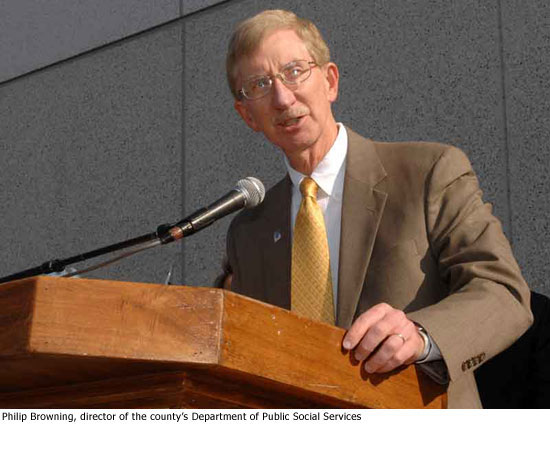 When Gov. Arnold Schwarzenegger this month unveiled his admittedly “ugly” spending plan that would slash the safety net for the state’s poor, one man understood the implications better than most.
When Gov. Arnold Schwarzenegger this month unveiled his admittedly “ugly” spending plan that would slash the safety net for the state’s poor, one man understood the implications better than most.
Philip Browning oversees Los Angeles County’s Department of Public Social Services, the largest such agency in the nation, serving more than 2 million people. Schwarzenegger’s proposed budget takes dead aim at the services his nearly 14,000 employees deliver, including in-home help for the disabled and the state’s welfare-to-work program.
Given the opportunity, here’s what Browning would respectfully tell the governor. “You need to visit one of our offices. Spend the day with one of our customers. Look at the people affected by your decisions. Until you see and experience their problems, you can’t appreciate your impact.”
Schwarzenegger, who has vowed not to raise taxes as a way to close California’s $20 billion deficit, has presented the legislature with a 2010-2011 budget that is unparalleled in the breadth of its proposed cuts to social programs. The largest single reduction would be the $1.6 billion CalWORKs welfare program, which provides an average of $500 a month to families and requires participants to eventually obtain jobs. Its elimination would make California the only state without a welfare-to-work program for low-income families with children.
Now the budget action will shift to California’s deeply partisan legislature, where Republicans have vowed to block tax increases and Democrats have insisted they will not, in the words of Senate leader Darrell Steinberg of Sacramento, “be a party to devastating children and families.”
This week, Democrats got ammunition from the non-partisan Legislative Analyst’s Office, which said Schwarzenegger’s proposed cuts to CalWORKs and other social programs should be rejected in favor of new fees and other less damaging approaches to replenish state coffers that have been drained by the faltering economy.
As Browning knows, the stakes in all of this are extraordinarily high for L.A. County, which is grappling with its own $500-million budget deficit. His department has estimated that if CalWORKs was eliminated, 320,940 children in 167,617 families would lose cash assistance. Financial responsibility then would be shifted to the county’s general relief program, costing the county an estimated $452 million annually—if just half of CalWORKs participants were deemed eligible. (Click here for an analysis by the county’s Chief Executive Office.)
And the fallout wouldn’t end there. More than 4,000 county employees who administer the CalWORKs program would suddenly find themselves without jobs, putting additional strains on county services at a time when CalWORKs’ client rolls already have swelled because of the recession. “There are very few empty seats in our waiting rooms,” Browning said.
Browning said he drove by one of his agency’s offices the other day and saw people lined up in the early morning drizzle. “They were standing out in the cold so they could be first in line to get inside a warm building, where they could apply for a benefit that is meager, at best.”
Many of these people, he said, represent the newly needy, who never pictured themselves applying for food stamps or benefits that the governor now wants to end. They’ve come in such large numbers, Browning said, that some of his front-line workers have had a hard time adjusting. “The workers identify more with participants today than ever before,”
Browning said. He said they tell him: “They look just like me. I feel so bad.”
To help them cope, Browning said he created an “emotional well-being class,” where workers can share their experiences and find support. He said he also created a “basic finance” class that teaches about “bankruptcy, foreclosure, all the terms that we are having to deal with.”
The imperative now, Browning said, is to communicate these realities to Sacramento.
“I have to make the best case possible about how human lives are going to be impacted by the decisions that politicians make in Sacramento,” Browning said. “They are far removed from the everyday trials and tribulations of these individuals. Some our legislators have taken the time to go on ride-alongs with us. They’ve seen the debilitation, they get it. But there are some who we can’t get to take that journey with us yet. They’re the ones we’re trying to show that what we’re doing is responsible, accountable and not overly generous.”
In recent weeks, he said, the agency has been videotaping people who desperately need the programs that are on the governor’s hit list, including In-Home Supportive Services, which has been targeted for significant cuts. The IHSS program pays a worker to provide basic care for qualifying seniors and others with disabilities so they can live independently.
“Without someone to take care of them at home,” Browning said, “I’m convinced they’d be institutionalized.”
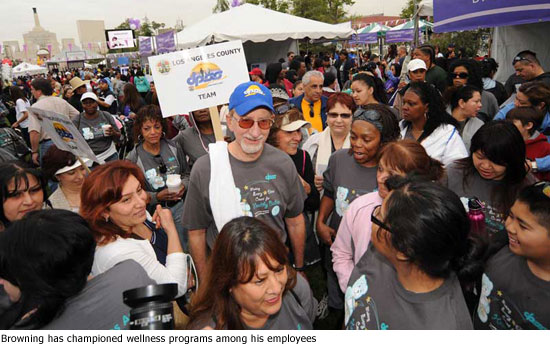 He said the videos—one of an elderly disabled woman, the other of a severely handicapped child—would hopefully be shown during budget deliberations to give legislators a real-life understanding of the issues beyond the statistics.
He said the videos—one of an elderly disabled woman, the other of a severely handicapped child—would hopefully be shown during budget deliberations to give legislators a real-life understanding of the issues beyond the statistics.
Still, no matter how effective the strategy, Browning knows that difficult days lie ahead. He believes compromise will be reached in Sacramento to avert the worst-case scenarios but that state government simply has run out of gimmicks to balance the budget.
“All the smoke and mirrors have been used,” he said. “I think there are a lot of people who are going to be hurt.”
A lifeline for independence
Faced with the prospect of serious cuts to social services in the California budget, the L.A. County Department of Public Social Services has produced two videos showing the crucial role of one endangered program—In-Home Supportive Services, which helps seniors and others with disabling conditions avoid institutionalization.

A bold new look for summer
May 20, 2010
The Santa Monica beach skies were grey but L.A.’s iconic lifeguard towers were anything but.
And the cadre of casual beachgoers who happened upon the just-unveiled towers—newly painted in wild, psychedelic hues—got an eyeful Wednesday morning.
If their early reviews are any indication, the towers’ summer makeover has the makings of an international crowd-pleaser.
“It’s beautiful!” said Yves Bollotte, a visitor from Paris, directing his Gallic enthusiasm at one of the three towers on view near the Santa Monica Pier.
“It’s groovy,” said Joyce Attal, CEO of a New York City marketing firm, who’d just finished jogging. “It’s bringing the hippie days back to the beach.”
“I think the towers are spiffy, if that’s still a word,” said Mary Loucks, a teacher from Kern County who was keeping a close eye on her soaked but happy field trip class of second-graders.
“I like the color and pizzazz,” added homeless advocate Ron Hooks, of not-so-far-off Marina del Rey, as he stood astride a blue bike on the boardwalk chatting with a homeless man with a football who called himself R.U. Faster.
By summer’s end, hundreds of thousands of beachgoers are expected to see the towers, part of a giant “Summer of Color” public-art project that by early June will bestow a temporary new look on all 156 L.A. County lifeguard towers, from Palos Verdes to Malibu.
When the project is complete, towers along a 31-mile stretch will sprout colorful flowers, figures and abstracts. Even the ramps and pilings are getting the Day-Glo treatment for the project, which will be on display until October.
The $1.5 million privately-funded effort is the brainchild of Bernie and Ed Massey, founders of the L.A.-based non-profit arts and education group called Portraits of Hope. Their organization brings together thousands of hospital patients, school children and disabled people to collaborate on brightly painted public art. Earlier targets for the colorful treatment: a Beverly Hills oil well, New York taxicabs and even a blimp.
At Wednesday’s unveiling, in which grey plastic sheeting was stripped off the three towers for a slo-mo “reveal,” lifeguard officials said they were initially skeptical of the color explosion about to overpower their towers’ traditional Holland blue.
“We are a conservative bunch, and we weren’t totally sold on this project at first,” Mike Frazer, chief of the county’s lifeguards, admitted to the crowd.
Frank Bird, a director with the lifeguards’ union, said skeptics became converts by helping out with the painting sessions at the project’s Marina del Rey headquarters with students from the Braille Institute and from a Compton middle school at which many students had never seen the ocean before the trip. “Our guys are really on board now,” Bird said.
At the ceremony on the sands, Supervisor Zev Yaroslavsky thanked his wife, Barbara, for persuading him to get the project rolling with the county because of her admiration for the Masseys’ work. Her lobbying paid off; Yaroslavsky’s office helped smooth the way with county agencies with jurisdiction at the beach, including the Beaches and Harbors Department and the Lifeguard Service.
The giant projects are a form of art therapy. Kids learn that their efforts can make a difference when they see their finished artwork displayed in very public places. About 8,000 volunteer artists, mostly children, took part in painting over 2,000 pre-cut plastic-coated panels in recent months that are now being bolted to the sides and roof of the lifeguard towers. (See our earlier story here.)
“These projects are all about kid power,” Bernie Massey said at the ceremony.
The art therapy concept appealed to French tourist Bollotte.
“It is therapy for us, too,” he noted.
Lindsay Hannah, a visiting artist from British Columbia who was swinging on the tall swing set at the beach playground near the tower, felt the same way. “I absolutely agree that art is therapeutic,” says Hannah. “It’s fantastic.”
Posted 5-19-2010
A different kind of biker bar—for a day
May 19, 2010
Last year’s Tour de France had Mont Ventoux. This year’s Amgen Tour of California has the Rock Store Climb.
Mont Ventoux is a diabolically difficult ascent in Provence, notorious among the world’s greatest bicyclists. The Rock Store climb is known among motorcyclists far and wide as 2.6 miles of Southern California two-lane nirvana.
Ventoux’s name has ancient origins but to the modern ear suggests the wind—vent, in French—that so often whips the summit. The Rock Store Climb’s name suggests, well, the Rock Store—a legendary Mulholland Highway watering hole that’s been a Hollywood hangout ever since Steve McQueen roared up one weekend day.
This Sunday, the Rock Store Climb will be on display for an audience more interested in Treks than Harleys. That’s when the tour—billed as the United States’ largest cycling event—takes a spin through the Santa Monica Mountains in the event’s final stage.
Make that four spins through the mountains.
Stage 8, described as the race’s “exclamation point,” is a 20.6-mile loop that will start at The Oaks shopping center in Thousand Oaks and will be repeated four times, for more than 80 miles in all, before it ends in front of the Westlake Hyatt. A more detailed interactive map is here.
Along the way, it will race along the switchbacks of Mulholland Highway and pass local landmarks such as Malibu Family Wines and the Rock Store. The winery will be hosting two events this weekend—a “Taste of the Tour” on Saturday afternoon and “Race Day at The Ranch” on Sunday. (Details on both events, along with information on other festivities in the area, are here.) At the Rock Store, at the base of the Rock Store Climb, owners Ed and Vern Savko will be serving a big private lunch on Sunday but plan to be open to the general public as well.
The Savkos’ establishment is off the beaten track. But it’s far from under the radar. This is a biker bar with a Facebook page. It also got some ink in a recent Wall Street Journal feature about scenic drives that car companies use to show off their new vehicles to the motoring press and has been the subject of coverage by motorcycle magazines around the world.
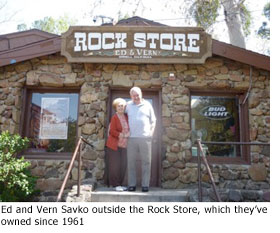 “This place is more known in Europe than it is around here,” says Savko, 84. “We get so many people, honey, you can’t even count ‘em.”
“This place is more known in Europe than it is around here,” says Savko, 84. “We get so many people, honey, you can’t even count ‘em.”
The Mulholland Highway stretch known as Rock Store Climb—or “King of the Mountain,” as Los Angeles County Sheriff’s Sgt. Philip Brooks calls it—is likely to be one of the most popular viewing spots during the race, with tens of thousands of spectators expected to line the winding route, which has an average grade of 7%. There’ll also be tented corporate events at the overlooks along the climb.
“We expect there’ll be wall-to-wall people there Sunday,” says Brooks, incident commander for the event, noting that the fire department will have a heli-pad nearby, just in case anyone gets hurt and needs helicopter transport.
Overall, spectator estimates for Stage 8 range from 150,000 to 250,000—with the biggest crowds expected at the race’s beginning and ending points, along with Rock Store Climb. “We’re set to handle whoever comes,” Brooks says.
Large crowds are also expected in downtown Los Angeles on Saturday, when the tour’s Stage 7 whirls into town. Metro’s blog The Source lists some viewing “hot spots” near public transportation and has the rundown on the 57 bus lines that will have detours starting at 5 a.m. on Saturday.
The tour, owned by L.A.-based AEG and sponsored by the biotech firm Amgen, which is headquartered in Thousand Oaks, started in 2006. But this is the first time it’s come through downtown Los Angeles—or this stretch of the Santa Monica Mountains. A coalition of three cities—Thousand Oaks, Westlake Village and Agoura Hills—came together as “Conejo Valley” to co-sponsor the final stretch of the 800-plus mile race.
The cities are encouraging spectators to watch from the official viewing spots—although viewers will be allowed all along the course, as long as they can find a safe and legal place to park. Information on parking and shuttles is here; a rundown on road closures is here. And a promotional video offers a preview of the course.
Out at the Rock Store Climb on Mulholland, the usual weekend crowd of motorcyclists will give way to some of the world’s fastest cyclists, who started the race on May 16 in Nevada City. Lance Armstrong was among them until he crashed Thursday outside Visalia.
Ed Savko says the cycling superstar had come by his store about six months ago. “He was just riding through,” Savko says.
A long line of other luminaries got there before he did.
Arnold Schwarzenegger is a longtime customer (or was before he became governor, Savko says.) Other well-known patrons range from Harrison Ford to Pink.
“I don’t even know who the hell the new ones are,” Savko says. “All my waitresses know them, though.”
Jay Leno is a house favorite. “You know when he’s there; people will leave their breakfast on the tables,” Vern Savko says. “They all flock to him.”
Even those who haven’t been to the Rock House in person might recognize it from its film and TV appearances, including “Happy Days,” when, as Savko lore has it, a young Ron Howard got behind the wheel with disastrous results.
“The first time he ever drove a car,” Ed Savko says, “he drove right into one of our gas pumps.”
The Savkos bought the place in 1961. “At the start, I was scared to take my own family because of all the tough guys,” Ed Savko says.
Not today.
“Mother’s Day, we were loaded with mothers, families and kids,” Vern Savko says. The customers, she says, “all call us Mom and Pop.”
And on Sunday, at least some of the passing racers will be calling out for mercy as they pass the Savkos’ place and head for Rock Store Climb—not once but four times.
“It’s going to be a tough ride for those cyclists,” Sgt. Brooks says.
Posted 5-19-10
Consumer alert: avoid grant-deed mailers
May 17, 2010
 There’s no good deed in this offer.
There’s no good deed in this offer.
Consumer affairs officials are warning homeowners to steer clear of direct-mail pitches that urge them to quickly order copies of their grant deeds to help prevent potential foreclosure. The cost: a hefty “processing fee” of $157 for a document that can be obtained directly for as little as $6.
These “Title Compliance” firms, exploiting foreclosure fears, suggest in the mailing that homes may be in jeopardy unless the owners obtain copies of their deeds by a certain deadline.
At the top of one of the mailers is the official-sounding heading: “Notice for Los Angeles County Property Owners.” It states that it is being sent by the “Records Retrieval Division.” Only in the fine print does the document disclose that it is coming from a private, “non-governmental company.”
“It’s very deceptive and misleading,” says Rigo Reyes, the Consumer Affairs Department’s acting director. Reyes says that having a copy of your grant deed does not protect you against foreclosure, which is usually the result of delinquent mortgage payments.
Those who don’t have a copy of their deed—and they are useful against certain forms of housing fraud—can easily order one from the county Registrar-Recorder/County Clerk. The cost is $6 for the first page and $3 for each additional page.
Last year, Consumer Affairs cracked down on scammers who also were using official-looking mailings to entice homeowners into paying excessive amounts for requests to have their homes reassessed for lower property taxes. In those cases, the companies were charging as much as $200 for a service performed by the Assessor’s Office for free.
The current mailings have been received in homes across the county this spring, in both Spanish and English. Reyes says that Consumers Affairs, which has made it “a high priority” to warn consumers, has logged 43 complaints, from Palmdale to Mandeville Canyon, with more expected.
To report a problem, or seek more information, visit the Consumer Affairs website or call 800-593-8222.
Posted 5/17/10
405 project questions? Ask away
May 17, 2010
If the prospect of three years of construction on the 405 Freeway has you concerned, curious, or both, here’s a chance to get some answers about the project directly from the man in charge.
Metro’s Mike Barbour, who’s heading up the effort to build a 10-mile northbound carpool lane through the Sepulveda Pass, will be answering questions during an online chat on Wednesday, May 26 from noon to 1 p.m.
The session is called “Living with the I-405 Sepulveda Pass Widening Project.” Metro asks that you submit your questions in advance, and says queries under 300 characters will get priority during the session.
Full information on the session is here, along with a project overview in which Barbour says that widening and improving the freeway—one of the nation’s busiest—is as “challenging as performing heart surgery on a patient while she runs a marathon.” The job’s expected to be completed by 2013.
Posted 5-17-10
Merce Cunningham troupe dances before saying goodbye
May 13, 2010
 Merce Cunningham was internationally recognized as one of the greatest choreographers who ever lived, an artistic force in the dance world for more than seven decades. His passing last year at the age of 90 left a void that won’t easily be filled, particularly since the troupe he founded, the Merce Cunningham Dance Company, has announced that after embarking on a two-year Legacy Tour in their founder’s honor, they will officially disband.
Merce Cunningham was internationally recognized as one of the greatest choreographers who ever lived, an artistic force in the dance world for more than seven decades. His passing last year at the age of 90 left a void that won’t easily be filled, particularly since the troupe he founded, the Merce Cunningham Dance Company, has announced that after embarking on a two-year Legacy Tour in their founder’s honor, they will officially disband.
But as dance aficionados are mourning his loss, they will also be celebrating his achievements when the Music Center presents on the Walt Disney Concert Hall stage the world premiere of the reconstructed piece ROARATORIO, specially commissioned by the Music Center, Festival Montpellier Danse 2010, and Théâtre de la Ville/Festival d’Automne à Paris. Accompanying the three performances will be the music of modernist composer John Cage. Also taking place will be a number of related events, including discussions, lectures, art exhibits and interactive workshops.
Single tickets are still available for the June 2-4 performances at Walt Disney Concert Hall; for an appreciation of Cunningham’s artistic contributions, check out local visual and performing arts blog artsmeme.
Posted 5-13-10
Restored “Metropolis” is back in town
May 13, 2010
Shortly after its 1927 premiere in Weimar Germany, Fritz Lang’s dense but visionary science-fiction fable “Metropolis” was drastically cut by roughly 40% of its running time in an effort to broaden its audience appeal and earn back the cost of what at the time was the most expensive movie Germany had ever produced.
But over the years, so much additional footage was lost, damaged or recut and mutilated that a bitter and despairing Lang declared that his most famous film “had ceased to exist.” Film scholars dismissed periodic attempts at restoration as only partially successful at best, and “Metropolis” gradually became better known to the general movie-going public as a ghostly legend, embellished with a few striking production photos, more than a vibrant “moving picture” theatrical experience.
But then–astoundingly–in early 2008, a virtually complete 16mm print was discovered languishing in an Argentinian film archive. For less than the cost of an average TV series episode, German film technicians repaired and restored the elements as best they could, recording a new soundtrack of the original symphonic score composed especially for the film.
The full-length “Metropolis” had its long-overdue return engagement at a handful of sold-out film festival screenings, including one earlier this year in Los Angeles. But now the rest of LA’s filmgoing community will have its chance to see the film that influenced “Blade Runner” and countless other science-fiction classics when “Metropolis” opens on Friday, May 14 at the Laemmle Royal Theatre in West Los Angeles.
Silent movie and science-fiction buffs will need no further prompting to start queuing up for tickets. But for the rest of us, visit the Kino International website for the full background of this fascinating film and the torturous path its history has taken. And if you need any additional encouragement, check out the Metropolis trailer.
Posted 5-13-10
A healthier relationship with the sun
May 13, 2010
 Southern California’s balmy weather may be a dream for visitors, but for those sensitive to the sun, it can be a nightmare.
Southern California’s balmy weather may be a dream for visitors, but for those sensitive to the sun, it can be a nightmare.
So just in time for the summer, let Kaiser Woodland Hills Medical Center show you how to co-exist with the sun without sacrificing your health. Continuing the Women’s Health Series that began in February—open to the general public—join the upcoming session devoted to “Taking Care of Your Skin,” conducted by Kaiser dermatologist Dr. Chi Rosenberg.
Here are the particulars:
Tuesday, June 1, 2010
5 – 6 p.m.
Kaiser Woodland Hills
5601 De Soto Ave.
Woodland Hills
Entrance 5, 1st Floor in Auditoriums B and C.
Attendees can enjoy light refreshments and compete for door prizes and opportunity drawings. Reserve your spot today by calling (818) 719-2448. And mark your calendar for future sessions on “Healthy Eating, Active Living Strategies for Busy Families” with Dr. Patricia De La Riva (September), and “Reducing Your Risk of Cancer” with Dr. Gary Schwartz (November).
Posted 5-13-10
On alert for mumps
May 13, 2010
 Getting the mumps was once a childhood rite of passage. But it’s rare in modern-day Los Angeles County, where the vast majority of young children are vaccinated against it, along with measles and rubella.
Getting the mumps was once a childhood rite of passage. But it’s rare in modern-day Los Angeles County, where the vast majority of young children are vaccinated against it, along with measles and rubella.
So with nine cases so far this year—six confirmed and four of those in the past two months—the Public Health department isn’t taking any chances. Mindful of an outbreak that started last year in Orthodox and Hasidic Jewish communities in New York and New Jersey, the department is putting out the word that mumps is communicable, potentially dangerous—and preventable.
The county had just seven confirmed cases in all of 2009, the same number in 2008 and only five in 2007, according to Dr. Jonathan E. Fielding, the county’s director of public health. In a public health advisory issued Tuesday, May 11, Fielding said symptoms include “swelling of salivary glands, fever and inflammation of the testes in teenage and adult males.”
He urged those with symptoms to stay out of group settings and see a doctor. And he noted that the best protection against the virus is the measles-mumps-rubella vaccine.
While the vaccine is most commonly given to children, medical officials say adults who have not been vaccinated should also do so.
“A few of the cases seem to have some relationship with the outbreak in the Hasidic community in New York,” Fielding said Thursday. But piecing it all together is a complicated matter of medical investigation. “Somebody came through South Africa,” Fielding said.
Dr. Nelson El Amin, medical director of the county’s immunization program, said there was evidence that some of the L.A. cases “may be related to travel related to Passover.”
“Not all are among the Hasidic population. Some are,” El Amin said.
He declined to be more specific, other than to say the L.A. patients ranged in age from infancy to adulthood and were from the northern and “Metro West” areas of the county.
“I can tell you that the majority of those who got it have not been immunized. I don’t believe any of them have been immunized as kids.”
The Centers for Disease Control and Prevention have been tracking the New York area cases as well as an outbreak at a small college in Iowa and among “a bunch of guys in Omaha” who went to a reunion basketball game and came down with the mumps, among other cases, spokesman Jeff Dimond said. The agency has posted on its website a mumps Q & A and “fast facts” on symptoms.
While the Los Angeles numbers may be small, the level of concern is not.
“We’ve been on heightened alert,” El Amin said. “Our job is to jump on things when there might be a trend.”
Posted 4-13-10





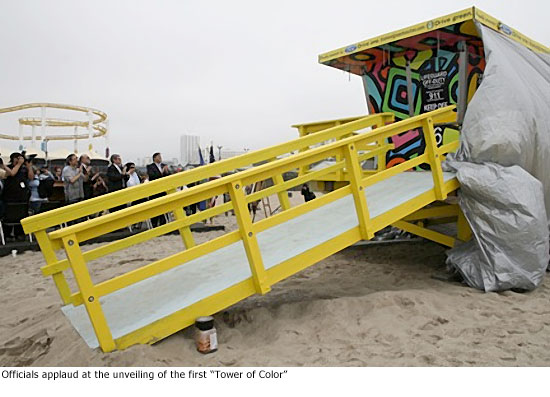
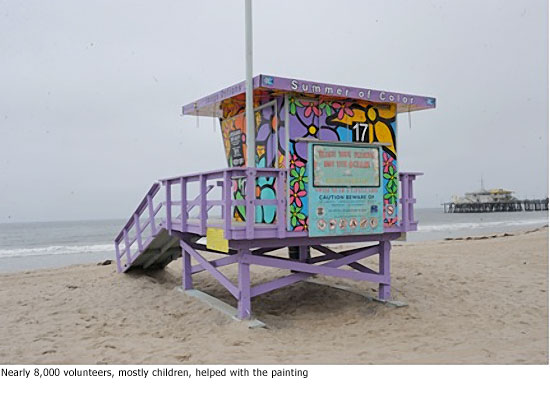
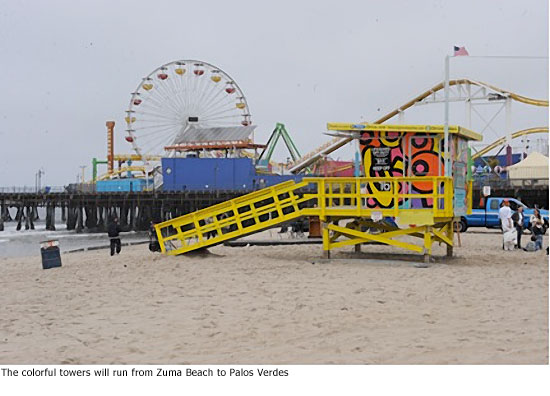
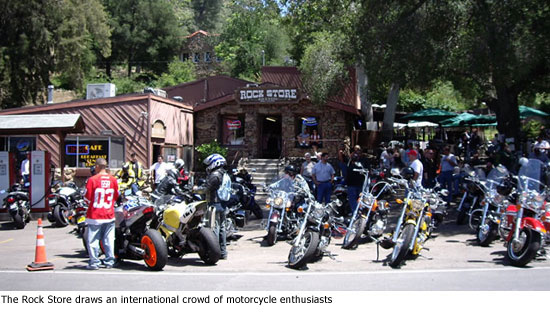
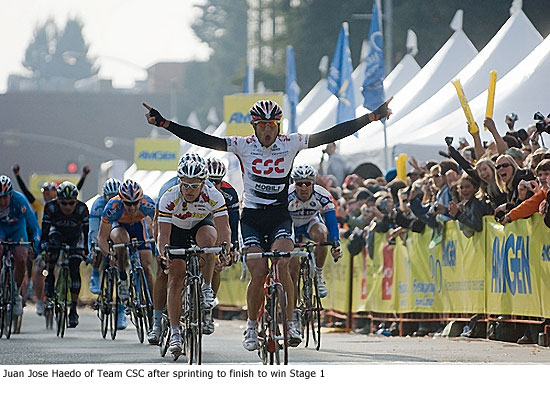
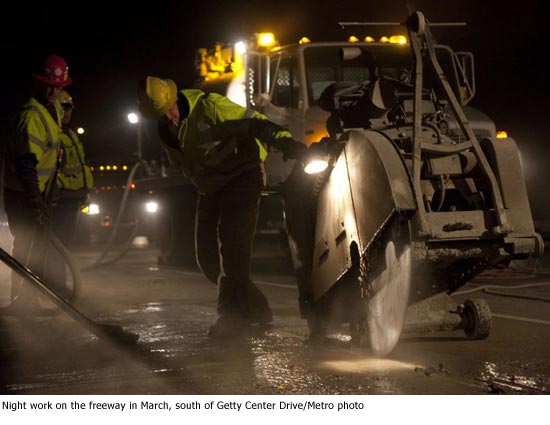






 Check for the latest closure information
Check for the latest closure information








